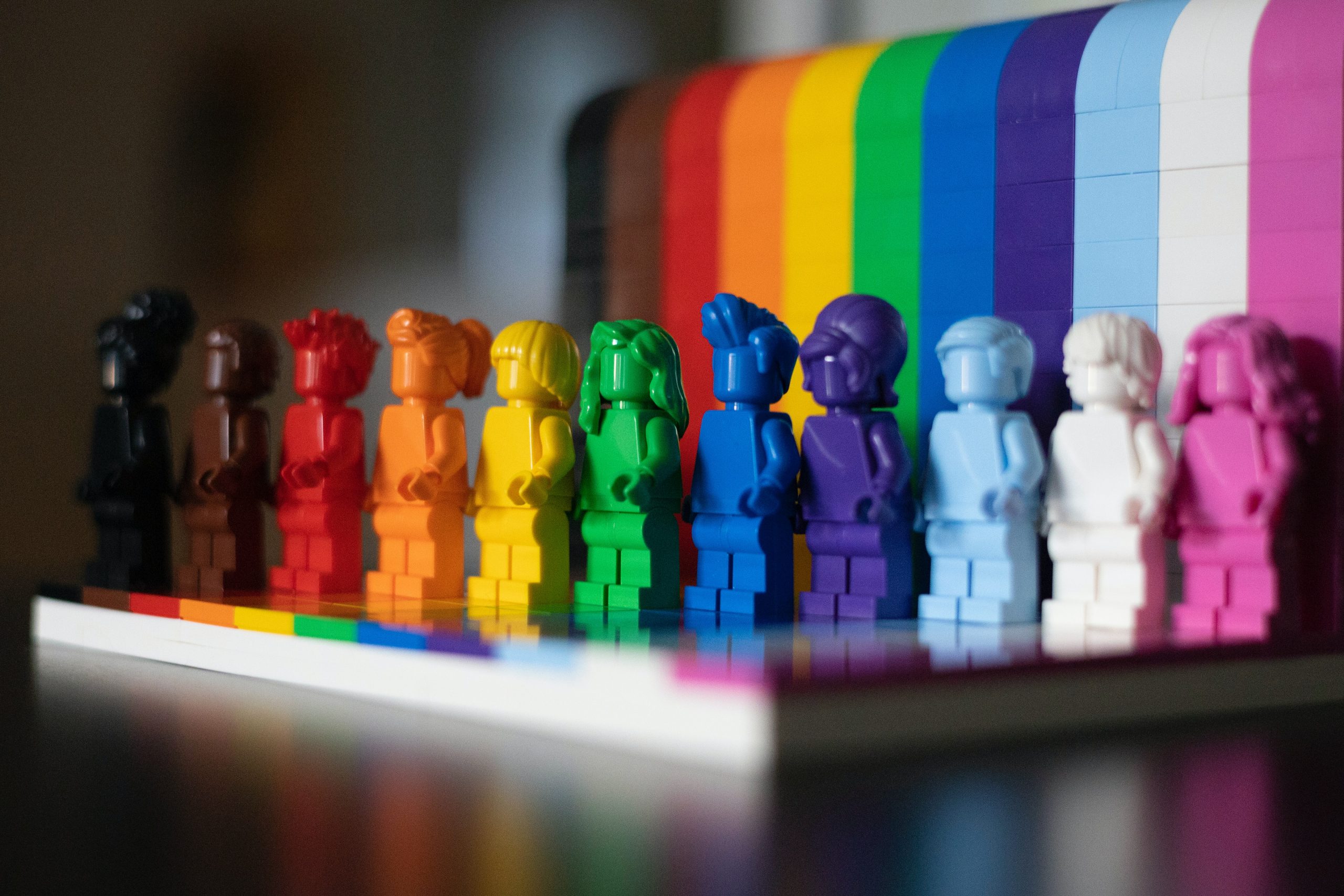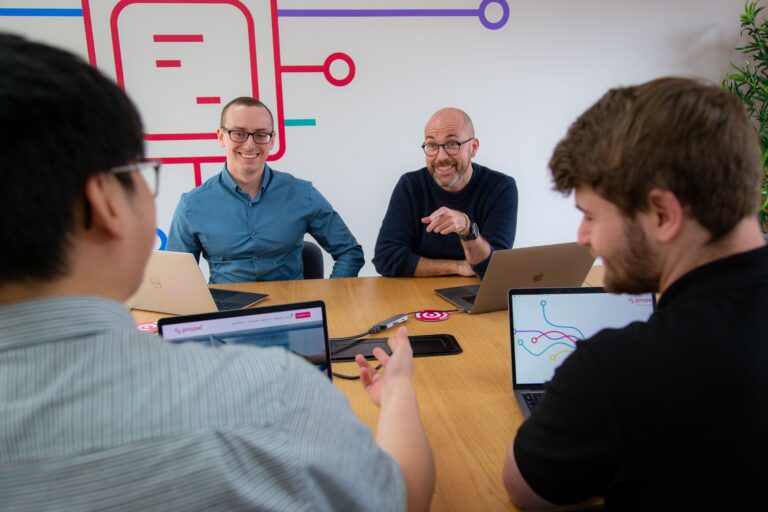In an era where the corporate landscape is more diverse and interconnected than ever, embracing a culture of meritocracy and collaboration is no longer an option but a necessity.
This exciting metamorphosis is rooted in the principle that talent and innovation know no boundaries of gender, race, or nationality, underlining the symbiotic relationship between meritocracy, collaboration, and diversity & inclusion.
As champions of organisational culture, HR leaders are tasked with shaping an environment where everyone feels valued for their unique contributions, and all ideas are welcome.
It’s a world where the best ideas win, and people come together to breathe life into them, irrespective of who they are or where they come from. According to Alex Turnbull, the CEO of Groove HQ, there was a 60% increase in employee engagement when managers strongly recognized employee performance.
This post dives deep into how to cultivate such a vibrant culture where meritocracy serves as the backbone, collaboration as the spirit, and diversity & inclusion as the heart, driving organisations towards unparalleled success and innovation.
Let’s journey together into the future of work, reshaping it with every step we take.
Understanding Meritocracy
At its core, meritocracy is the belief that power and rewards should be distributed based on merit, where ‘merit’ is often associated with competence, talent, and achievements, rather than factors such as social status, background, or personal connections.
This principle emphasises fairness, objectivity, and equality of opportunity, fostering a culture where the brightest ideas and the hardest workers shine, not just the loudest voices or highest ranks.
When implemented effectively, a meritocratic culture can significantly boost employee motivation and satisfaction. This is because when employees perceive that their efforts and skills are recognised and rewarded appropriately, they feel more valued and motivated to perform their best.
It fosters an environment of healthy competition and continuous learning, encouraging every individual to push their boundaries for professional growth.
The link between meritocracy and diversity and inclusion is profound. A meritocratic culture ensures that opportunities and rewards are open to all, regardless of their gender, race, religion, or other personal characteristics.
It breaks down barriers and creates a level playing field, enabling a truly diverse range of individuals to bring their unique perspectives and ideas to the table.
This intersection of meritocracy and diversity and inclusion ultimately drives innovation, as companies benefit from a variety of thoughts and approaches that arise from a diverse and inclusive workforce.
As we seek to develop and enrich our organisational cultures, understanding and implementing meritocracy serves as a key cornerstone for sustainable growth and success.
The Role of Collaboration in Business
In today’s rapidly evolving corporate environment, collaboration has become more than a buzzword; it’s a critical pillar that supports an organisation’s success. It is about people working together, breaking down silos, sharing ideas and resources to solve problems and achieve common goals.
When collaboration is fostered, organisations become breeding grounds for innovation. The magic happens when individuals with diverse experiences and perspectives come together to brainstorm and share their thoughts freely.
This amalgamation of ideas often results in innovative solutions that could not have been conceived in isolation. It is this synergy that becomes a catalyst for exponential growth and success.
Moreover, collaboration creates an environment conducive to knowledge sharing, wherein each team member’s expertise is harnessed to enrich the collective understanding and performance.
This shared knowledge creates a platform where learning is continual and reciprocal, boosting the team’s overall competence.
A strong culture of collaboration is inherently tied to diversity and inclusion. By inviting a multitude of perspectives to the table, organisations can leverage the rich tapestry of experiences and ideas that a diverse workforce offers.
When everyone’s voice is heard and respected, it not only fosters inclusion but also enhances collaboration. Hence, diversity, inclusion, and collaboration, when effectively entwined, serve as the engine propelling organisations towards a vibrant and inclusive future.
The Intersection of Meritocracy, Collaboration and Diversity & Inclusion
Diversity and inclusion play a pivotal role in enabling meritocracy and collaboration. They lay the groundwork for an environment where everyone, irrespective of their background, gender, age, or nationality, has an equal chance to demonstrate their abilities and contribute to the organisation’s goals.
In a true meritocracy, the diversity of employees is viewed as a strength, where each person’s unique experiences and perspectives provide the organisation with a wealth of insights and ideas that wouldn’t be possible in a homogenous group.
Diversity offers a wider array of solutions to any given problem, enhancing both the quality and quantity of ideas generated. It is through the inclusiveness of these diverse perspectives that meritocracy and collaboration thrive.
Organisations can extract the best strategies and insights by focusing on the merit of ideas rather than the individuals who propose them.
Moreover, collaborative problem-solving benefits immensely from diversity. Diverse teams bring a myriad of experiences, skills, and views to the table, making the collaborative process more dynamic and fruitful.
In this melting pot of ideas, every voice matters, and each perspective counts, fostering a culture where innovation and creativity are ignited.
Hence, the intersection of meritocracy, collaboration, and diversity & inclusion is not just where fairness and engagement meet, but where the true potential of an organisation is unleashed.
Building a Meritocratic and Collaborative Culture: Steps for HR Executives
Creating a culture that truly embodies the principles of meritocracy and collaboration, underpinned by diversity and inclusion, requires a thoughtful and strategic approach. Here are five key steps that HR executives can take to achieve this goal.
Step 1: Promoting Transparency and Clarity about Performance Criteria
A meritocratic culture starts with clear and transparent performance criteria. It’s crucial to ensure that employees understand what is expected of them and how their performance will be evaluated.
This clarity will help employees know exactly what they need to focus on to succeed. Regular, constructive feedback should be part of this process, enabling employees to continuously improve and align their efforts with organisational goals.
Transparency not only fosters trust but also encourages a sense of fairness and objectivity, pillars of a meritocratic environment.
Step 2: Encouraging Active Participation and Inclusive Decision-Making
A collaborative culture is all about collective participation. HR leaders should facilitate inclusive decision-making, where every team member feels comfortable sharing their ideas and opinions.
Providing platforms for open discussion and brainstorming can promote a sense of ownership and empowerment among employees. Equally important is recognising and valuing the input of all, ensuring everyone feels heard, respected, and integral to the team’s success.
Step 3: Establishing a Safe and Respectful Working Environment for All Employees
A meritocratic and collaborative culture can only thrive in a safe, respectful environment. HR leaders must ensure the organisation’s culture, policies, and practices promote respect for all employees and guard against any form of discrimination or bias.
Creating a workplace where individuals feel secure to express themselves authentically fosters inclusivity and encourages employees to bring their full selves to work, which is a precursor for collaboration and innovation.
Step 4: Offering Continuous Learning and Development Opportunities
Providing opportunities for continuous learning and development not only equips employees with the skills they need to excel but also demonstrates an investment in their growth. This can significantly boost motivation, engagement, and loyalty.
Training should be inclusive and tailored to meet the needs of a diverse workforce, fostering both personal and professional development.
Step 5: Setting up Diverse Teams and Fostering Cross-Functional Collaboration
By strategically composing diverse teams and encouraging cross-functional collaboration, HR leaders can leverage the full range of skills, experiences, and perspectives within the organisation.
These heterogeneous teams can tackle problems from various angles, fostering innovation, and making the problem-solving process more robust.
Implementing these steps will take time and dedication, but the reward – a thriving culture that values merit, encourages collaboration and celebrates diversity – will be well worth the effort.
As HR leaders, your role in fostering such a culture is pivotal, setting the foundation for a more inclusive, innovative, and successful future for your organisation.
HR Tools and Techniques for Monitoring Progress
An important aspect of creating a meritocratic and collaborative culture is monitoring progress and measuring impact. This requires the effective use of HR tools and techniques designed to gather data and provide insights.
HR Analytics and Key Performance Indicators (KPIs): HR analytics can provide a wealth of data on employee performance, productivity, and engagement. KPIs, aligned with organisational goals, can help monitor progress in fostering a meritocratic and collaborative environment. Metrics like team performance, individual contributions, or employee engagement can offer valuable insights.
Employee Engagement Surveys and Feedback Mechanisms: Regular surveys can measure employee engagement levels, their perception of the work culture, and their sense of belonging and inclusivity. Feedback mechanisms, such as 360-degree feedback, can provide a rounded view of performance and interpersonal dynamics.
Diversity and Inclusion Audits: These audits are important to ensure that the workforce is diverse and that inclusive practices are being implemented. They evaluate aspects like recruitment, retention, advancement, representation in leadership, and workplace culture, offering a comprehensive view of the organisation’s commitment to diversity and inclusion.
Implementing these tools and techniques helps HR executives to track, assess, and enhance their efforts towards creating a culture of meritocracy and collaboration.
Challenges and Pitfalls to Avoid
While pursuing a culture of meritocracy, collaboration, and diversity & inclusion, it is crucial to be mindful of potential challenges and pitfalls.
- The ‘Paradox of Meritocracy’: Organisations that espouse meritocracy can sometimes fall into a paradox where believing they are meritocratic leads to unconscious biases in decision-making. This can result in unequal opportunities or rewards. Regular training on unconscious bias and maintaining transparency in decision-making can help to avoid this pitfall.
- Managing Conflicts in a Collaborative Environment: Collaborative environments bring together diverse opinions, which can sometimes lead to conflicts. Investing in conflict resolution skills and fostering an environment of mutual respect can help mitigate this challenge.
- Avoiding Tokenism in Diversity and Inclusion Efforts: Diversity and inclusion initiatives should be meaningful and impactful, not just checking boxes or improving optics. It’s vital to ensure these initiatives lead to real change and not just superficial diversity. This requires a deep commitment to fostering an inclusive culture where diverse talents are valued and nurtured.
By anticipating these challenges and proactively addressing them, HR leaders can help ensure that their efforts to foster a culture of meritocracy, collaboration, and diversity & inclusion are genuine, impactful, and sustainable.
In the intricate tapestry of contemporary business, meritocracy, collaboration, and diversity & inclusion are interwoven threads that strengthen and beautify the overall design. As HR leaders, your role in promoting these principles and weaving them into the fabric of your organisation’s culture is pivotal.
By fostering a culture of meritocracy, you ensure that talent and effort are the keys to success, driving motivation and satisfaction. Encouraging collaboration creates an environment ripe for innovation, knowledge sharing, and team synergy. Infusing diversity and inclusion into these practices amplifies the benefits, inviting a multiplicity of perspectives that enrich decision-making and problem-solving.
This post has provided steps and strategies to help you on this journey, from promoting transparency to managing diverse teams, and beyond. Remember, while this journey may pose challenges, the rewards of a more inclusive, merit-based, and collaborative work culture are well worth the effort.
As you move forward, strive to create a work environment where everyone feels valued for their unique contributions, and where the best ideas can shine, driving your organisation towards a more vibrant and prosperous future.









